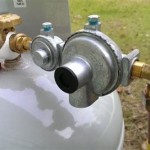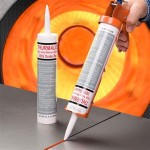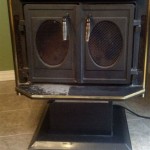Gas Fireplace Blowers: Enhancing Efficiency and Comfort
Gas fireplaces offer a convenient and aesthetically pleasing alternative to traditional wood-burning fireplaces. They provide instant warmth with minimal effort, eliminating the need to gather firewood and clean up ashes. However, a significant amount of heat generated by a gas fireplace can be lost through the chimney due to natural convection. This is where gas fireplace blowers play a crucial role, improving the efficiency and overall comfort provided by these appliances.
A gas fireplace blower, also known as a fireplace fan, is an electric fan unit designed to circulate the warm air produced by the fireplace into the surrounding room. It is typically installed in the lower compartment of the fireplace unit, drawing cooler air from the floor level and forcing it through the heating chamber, where it absorbs heat from the firebox. The warmed air is then expelled back into the room, creating a more even distribution of heat and increasing the overall heating capacity of the fireplace.
Understanding the Benefits of a Gas Fireplace Blower
The primary benefit of a gas fireplace blower is its ability to enhance the efficiency of the fireplace. Without a blower, much of the heat generated rises directly up the chimney, providing minimal warming to the room. The blower overcomes this convective heat loss by actively circulating the warm air, directing it into the living space. This can lead to a noticeable increase in room temperature and a more comfortable environment, especially in larger or poorly insulated rooms.
Furthermore, the improved heat distribution facilitated by a blower helps to eliminate cold spots in the room. The blower evenly distributes the heated air, ensuring that all areas of the space receive adequate warmth. This is particularly beneficial in rooms with high ceilings or those that are prone to uneven temperature distribution. By circulating the air, the blower creates a more consistent and comfortable ambient temperature throughout the room.
Another significant advantage of using a gas fireplace blower is the potential for reduced energy consumption. By efficiently circulating the warm air, the blower allows the fireplace to heat the room more quickly and effectively. This can reduce the amount of time that the fireplace needs to operate at full capacity, leading to lower gas bills and energy savings. In addition, the enhanced heating efficiency may also allow the homeowner to lower the thermostat setting on their central heating system, further reducing energy consumption.
Key Considerations When Choosing a Gas Fireplace Blower
When selecting a gas fireplace blower, several factors require thoughtful consideration. The size and model of the fireplace are essential considerations. The blower must be compatible with the specific dimensions and design of the fireplace unit. Consulting the fireplace manufacturer's specifications or seeking advice from a qualified fireplace technician is recommended to ensure proper fit and functionality. A blower that is too large may not fit properly, while a blower that is too small may not provide adequate airflow.
The blower's airflow capacity, measured in cubic feet per minute (CFM), is another crucial factor. The appropriate CFM rating will depend on the size of the room that needs to be heated. Larger rooms generally require a blower with a higher CFM rating to effectively circulate the air. It is important to choose a blower with sufficient airflow to adequately distribute the heat throughout the entire space. Overestimation is generally preferable to underestimation to avoid uneven heating.
The noise level produced by the blower is also an important consideration. Some blowers can be quite noisy, which can be disruptive and detract from the ambiance of the fireplace. Look for models that are designed for quiet operation, often featuring noise-dampening materials or variable speed settings that allow for adjusting the fan speed to minimize noise. Reading online reviews or seeking recommendations from other users can provide valuable insights into the noise levels of different blower models.
Installation and Maintenance of a Gas Fireplace Blower
The installation of a gas fireplace blower typically involves fitting the blower unit into the designated compartment within the fireplace unit. It is crucial to carefully follow the manufacturer's instructions and safety guidelines during installation. In some cases, professional installation may be recommended, especially if electrical wiring is involved. Improper installation can lead to malfunctions or safety hazards, so it is essential to ensure that the blower is installed correctly.
Regular maintenance is essential to ensure the continued optimal performance of the gas fireplace blower. This typically involves cleaning the blower unit periodically to remove dust and debris that can accumulate over time. Dust buildup can reduce the blower's efficiency and potentially lead to overheating. A vacuum cleaner with a brush attachment can be used to gently clean the blower blades and housing. It is also important to inspect the blower's wiring and connections regularly to ensure that they are secure and in good condition.
In addition to regular cleaning, it may be necessary to lubricate the blower's motor periodically. This can help to reduce friction and noise and extend the lifespan of the blower. Refer to the manufacturer's instructions for specific recommendations on lubrication and maintenance procedures. Following these guidelines will help to ensure that the gas fireplace blower continues to operate efficiently and reliably for years to come.
By understanding the benefits, selection criteria, and maintenance requirements of gas fireplace blowers, homeowners can make informed decisions about incorporating these valuable accessories into their gas fireplace systems. The result is improved heating efficiency, enhanced comfort, and potential energy savings, making the gas fireplace a more effective and enjoyable source of warmth.

Fireplace Efficiency Blowers And Why You Should Have One

Noisy Gas Fireplace Blower Here S How To Replace It Diy

Why Should I Get A Fireplace Blower For My Masonry

Installing A Fireplace Blower Gfk4 Gfk4a In Heatilator Natural Gas

Fireplace Blowers Explained How Fans Work Regency

Superior Fbk 250 Variable Sd Blower Kit With Thermostatic Snap Switch For Gas Fireplaces

Fireplace Blower Fans What You Need For Heat Full Service Chimney

36 Tahoe Rf Premium Direct Vent Fireplace Blower Remote Electronic Ignition Empire

Pleasant Hearth Gfb100 Vent Free Gas Fireplace Blower Com

Fireplace Blower Kit Comparison Ours Vs Kits
Related Posts








